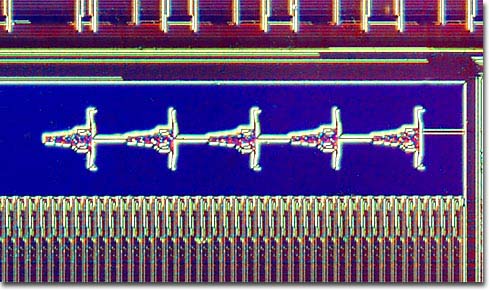Five Cows
|
A string of five cows (or perhaps five cow skulls) appears on the surface of an Advanced Micro Devices (AMD) 80486DX4 microprocessor. An anonymous engineer has informed us that the heads represent the internal codename given to the AM486-DX4 development project. The project's name was Longhorn, and was targeted to directly compete with the Intel 486-DX2 microprocessor chips. With the eventual release of the Longhorn, Intel found itself caught in a stampede and had to scramble to catch up with AMD's more advanced technology. We are told that before the Longhorn project, Intel never took AMD seriously as a competitor and so was never in a hurry to release better, faster microprocessors. There were at least five revisions to the AM486-DX4 masksets before the devices were made available to the public. Customer samples were first released at the second revision (which probably only had two cows), and the number of heads are rumored to reflect the revision level of the masksets. AMD produced it's own cleanroom version of the 486 microprocessor, which was slightly more efficient and physically different from the Intel devices. The chip utilized the same instructions, was almost identical electrically in the socket, but the microcode was different and the architecture was streamlined to enable the AMD chip to run faster and more efficiently. The chip containing this artwork was loaned to us by Chipworks, a company that is an international provider of reverse engineering services, analyzing the circuitry and physical composition of semiconductor chips and electronics systems for competitive study, intellectual property support, and reliability assurance. |
© 1995-2025 by Michael W. Davidson and The Florida State University. All Rights Reserved. No images, graphics, software, scripts, or applets may be reproduced or used in any manner without permission from the copyright holders. Use of this website means you agree to all of the Legal Terms and Conditions set forth by the owners.
This website is maintained by our
|
